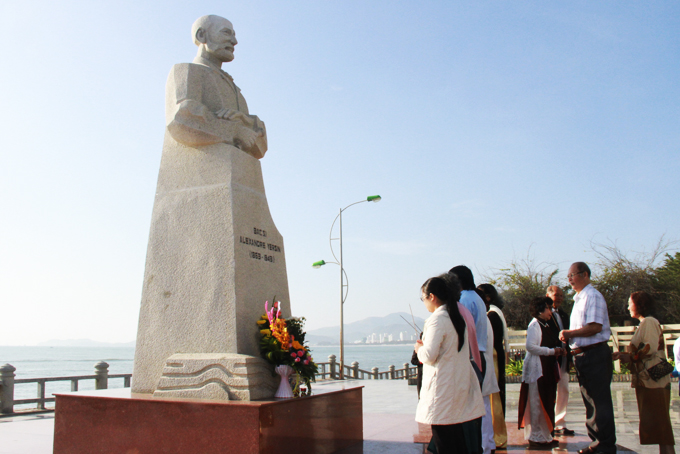Within the framework of Nha Trang Sea Tourism Festival 2022, Khanh Hoa Travel Association has introduced the tour "Following footsteps of Doctor A. Yersin". Starting from A.Yersin Park (Nha Trang City), visitors will step by step discover the imprints and legacy of this famous scientist in the more than half a century he lived and worked in Nha Trang.

Coming to Yersin Museum, visitors can see ancient objects and equipment for the scientific research process of scientist A. Yersin such as Leroy antique clock, books, newspapers, computer, globe, telescope and other unique experimental instruments. In particular, the museum also keeps the microscope with which Dr. Yersin found the plague germs, the camera he used during his expeditions to the Lang Biang plateau (Lam Dong province) and surrounding areas.
Visitors can also see a model of Dr. Yersin's house in Con Hamlet, Nha Trang. In this house, the venerable doctor has saved many lives, free medical examination and treatment for the poor. In the museum, there is also a model of the room he used to live with bed, bookcase, mirror wardrobe, rattan chair... It was a modest and simple life. The love letters that he sent to his mother and sister are also displayed showing his affection for the land and the people of Nha Trang - Khanh Hoa. During his lifetime, A.Yersin was very keen on exploration and photography. He left hundreds of valuable photos related to the landscape and culture of Khanh Hoa, Lam Dong and neighboring provinces. And some of them are on display at the Yersin Museum.
Leaving the museum, visitors follow Yersin Street to the west towards Suoi Dau (Suoi Cat commune, Cam Lam district) - where doctor A. Yersin set up a horse farm in 1896 to prepare serum to cure plague and a farm to grow crops and raise livestock to get funding for scientific research and help the poor. According to researchers, around 1898, A. Yersin bought 500ha of land in Suoi Dau for farming and breeding. He planted Liberia coffee trees, medicinal plants, coca plants to produce cocaine used in the pharmaceutical industry, selected a variety of plants and animals from around the world to grow here, turned it into an agricultural and scientific community with a dispensary serving the local residents. This experimental center later became the first veterinary institute in Indochina.
During this trip, visitors can visit Linh Son Phap An Pagoda (formerly the house of Doctor Yersin who used to stay every time he went to Suoi Dau). Doctor Yersin's grave (Suoi Cat commune) is the end point of the journey. A. Yersin died at his home in Xom Con (Nha Trang) on March 1, 1943.
| Alexandre Emile John Yersin (1863 - 1943) was a world-famous French scientist, of Swiss origin. At a young age, instead of pursuing a brilliant scientific future in Paris, he decided to leave France to go to Indochina in 1890. Arriving in Nha Trang in 1891, A. Yersin loved Vietnam and stayed in this land for the rest of my life. He was the first to discover the bacillus causing bubonic plague and he together with doctor Roux prepared a serum to treat the plague at the end of 1894. A. Yersin was the founder of the Pasteur Institute in Nha Trang; founder of the School of Medicine in Hanoi (Hanoi Medical University now) and became the first rector of the school. He was also the one who discovered the plateau of Lang Biang (Lam Dong), Hon Ba (Khanh Hoa), showed the road from Central Vietnam to Cambodia… A. Yersin was also an excellent agronomist as he was the first to enter the variety of rubber trees to be planted in Vietnam, trial planting of cinchona to produce antimalarial drugs... |
Xuan Thanh - Translated by T.T